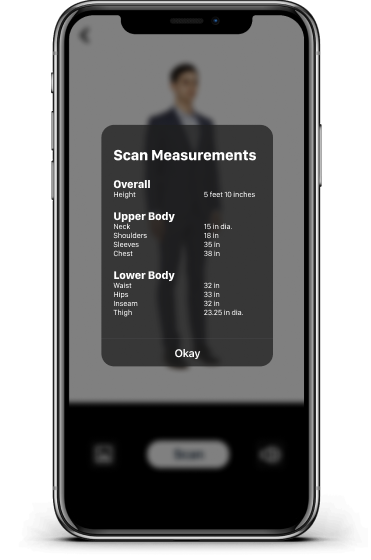
Syze: A Shopify Integrated Plug-in
How might we bring brick and mortar sensory experiences online so that consumers around the world can get enriched shopping experiences like they may get in-store?
TIMELINE: 1 week design sprint
MY ROLE: UX researcher, UX designer, Wireframing Prototying, User testing
CLIENT: Shopify
The Brief
With COVID-19, retailers around the globe are forced to close their retail stores or limit operating hours to help curb the spread. As a result, there is a pressing need to find ways for brick and mortar businesses to adapt to in-store shopping expectations around the world and bring their unique in-store advantages online. For this design sprint, we were put in groups of 4 and we had 1 week to create a digital product to help bring brick and mortar sensory experiences online.
Design Process
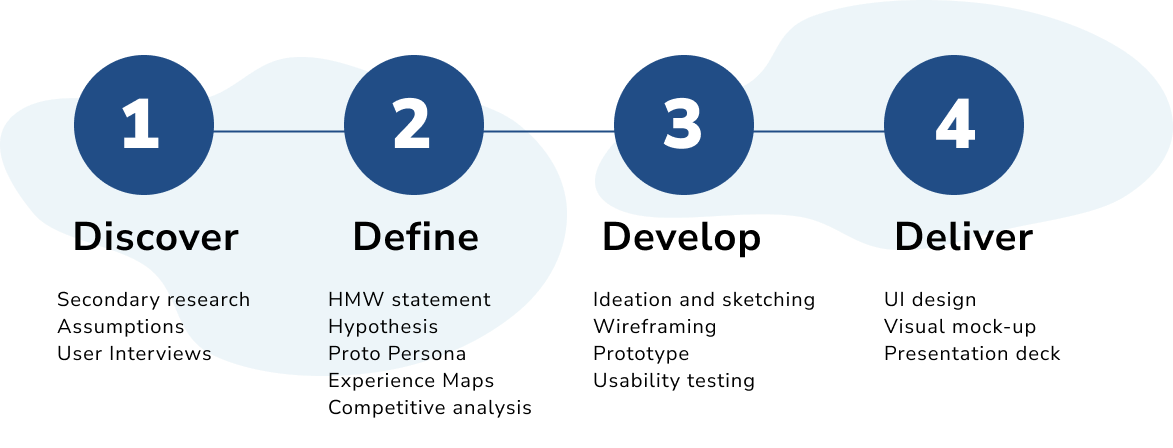
Research
I started off conducting secondary research on consumer shopping behavior between regional markets, and consumer online and offline shopping behavior for different industry sectors. This will help be obtain a general idea of the problem space and identify a market and specific industry to focus on.
67% of young adults have increased their online shopping compared to earlier this year (2020)
46% of merchants reported the size, colour, and fit being wrong as the #1 reason for online returns
4/10 Consumers around the world say “feeling like the experience is personalized to me” makes them more likely to purchase something
After finding valid facts from our research, we decided to focus on:
Regional market: North America
Product Category: Apparel Stores
Existing Online Apparel Shopping Experience Flow
I mapped out the existing flow for purchasing apparel online, so I can identify the sensory gaps when shopping online and find out where a possible solution can be implemented in the user experience
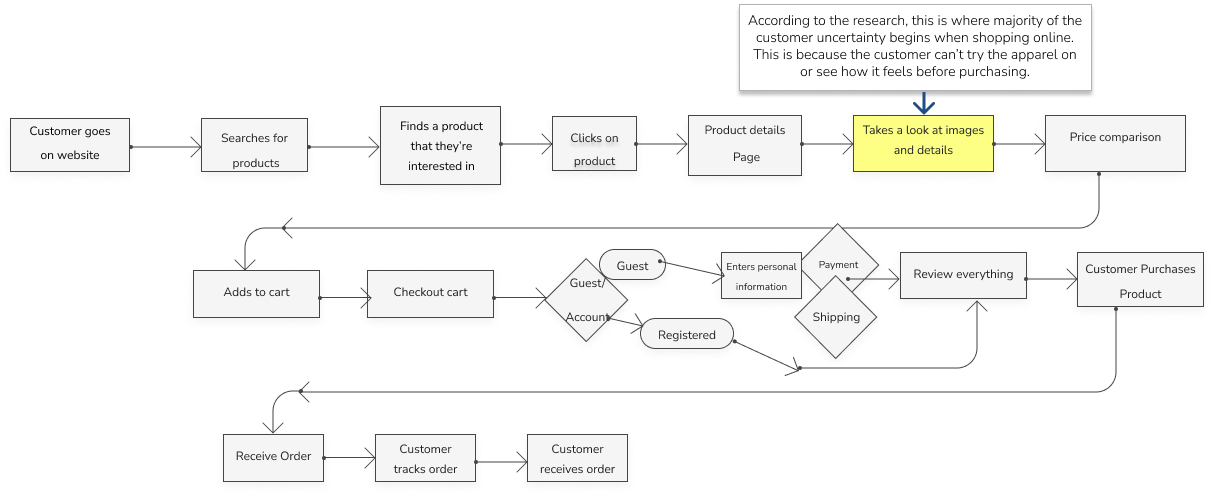
How might we help young adults in North America feel confident with their online purchases in order to decrease customer sizing anxiety when shopping online?
User Interviews
We conducted primary research by directly interviewing 10 millennials in North America and gathered 3 main insights:

Assumptions and Hypothesis
Before creating a proto-persona, we brainstormed some assumptions and a hypothesis about our consumers and product
Assumptions:
- Consumers like assistance when it comes to recommendations and knowledge of the product
- Consumers have trouble quantifying their clothing sizes in relation to store brand or country metrics
- Knowing a garment will fit beforehand aids in leading to a purchase decision
- Being able to assess a garment’s material and colour aids in leading to a purchase decision
Hypothesis:
We believe that giving customers their accurate sizing will make them happier with their purchase and lower return rates
We will know we are right when we see positive reviews around sizing, decreased returns, and increased conversion.
Proto-Persona
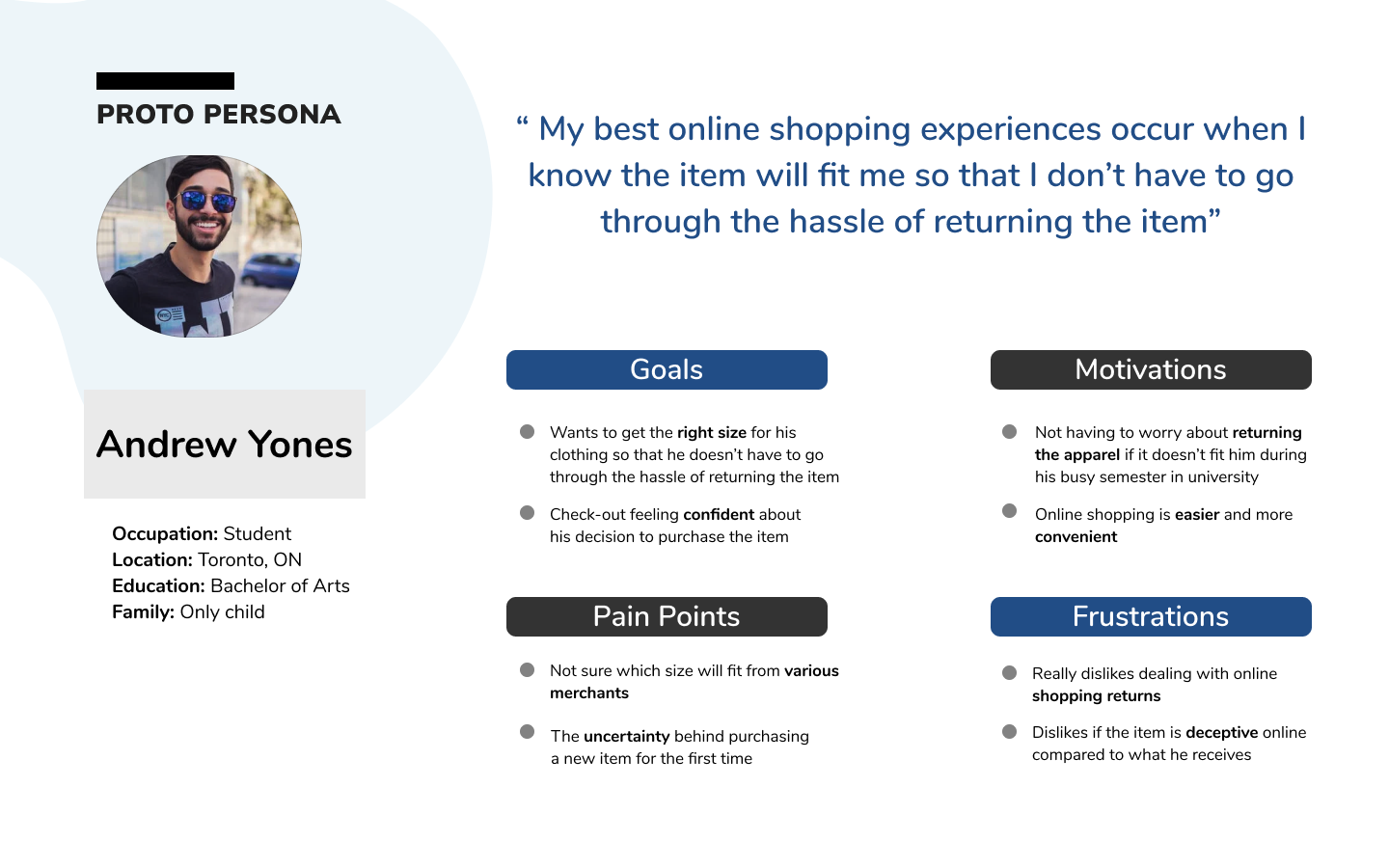
Experience Map
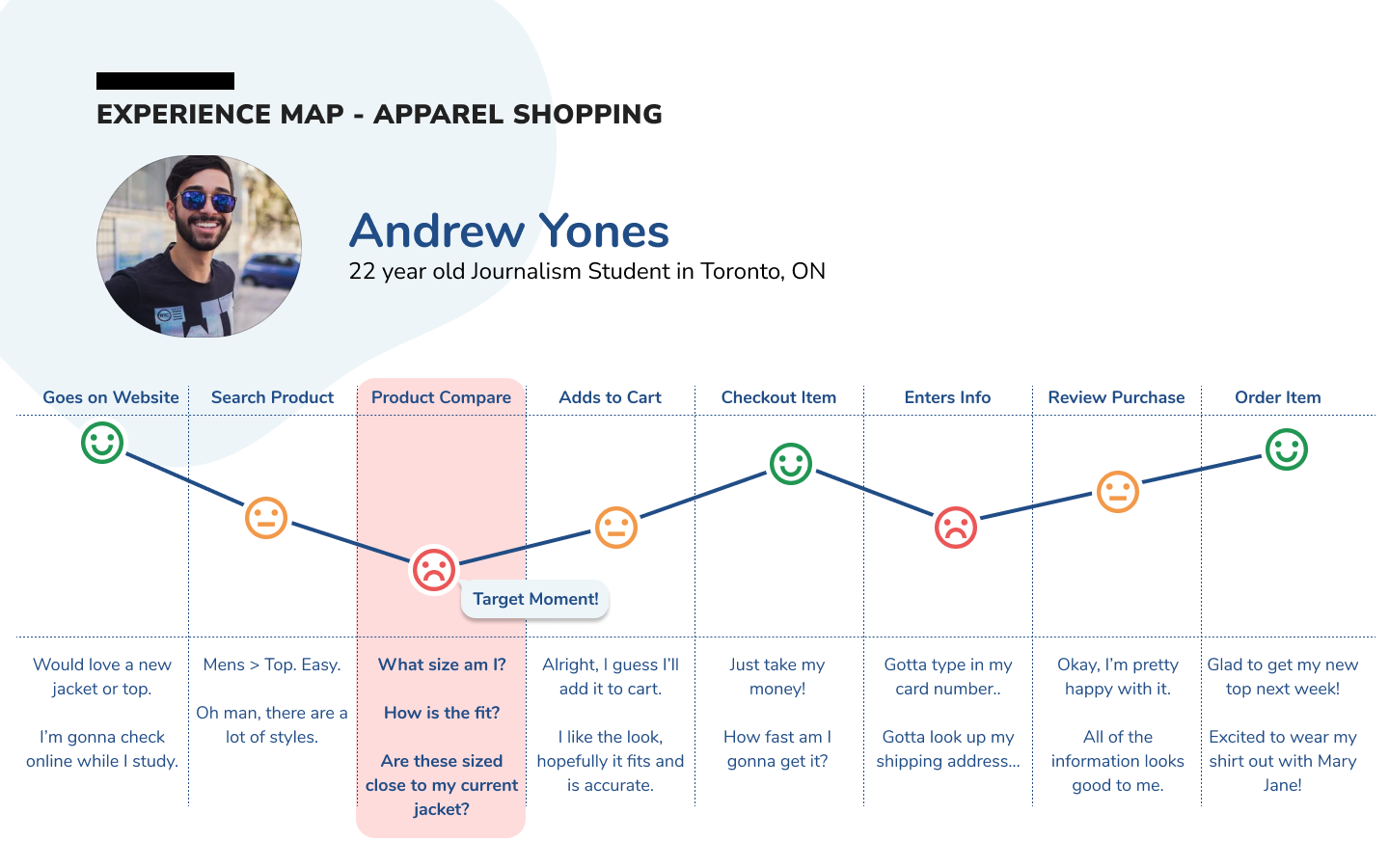
Competitive Analysis
Before getting into the solution, we conducted a competitive analysis on what businesses are currently using to solve the sizing problem while online shopping
1. Typical Size Chart
- Requires prerequisite measuring beforehand, double checking between sizes and values
- Very generic, not custom for the customer
- Clothing sizes are inconsistent. Varies depending on country, brand, design
2. Kiwisizing
Kiwisizing is a size reccommender tool, where you input your custom sizes for the best outcome. Currently, the #1 sizing solution on Shopify
- Requires you to download an app and prerequisite measuring beforehand
- Manual data entry, multiple step system
- Opportunities: Simplify the process so it requires less in-person measurements and it will be more efficient for customers to use
Ideating and Conceptualizing
I started sketching a simple task flow of a user shopping online and finding their perfect size for a specific clothing item with the help of a plug-in which provides accurate measurements
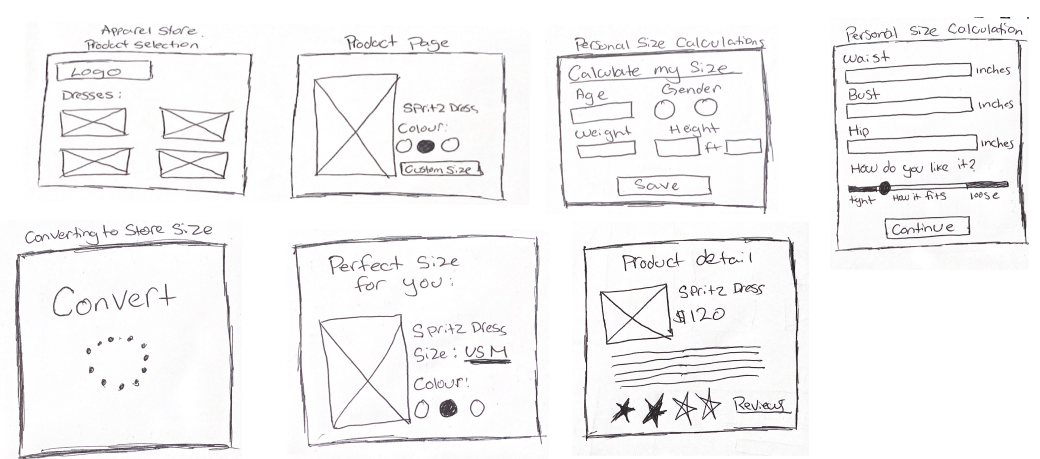
Version 1 Prototype
For our V1 prototype, we took inspiration from Kiwisizing, but we wanted to simplify it. Our solution is a custom size plug-in incorporated in the user shopping journey. Which ever site the user is shopping on, they can select “custom size” to find their perfect size for the specific clothing item in that store.
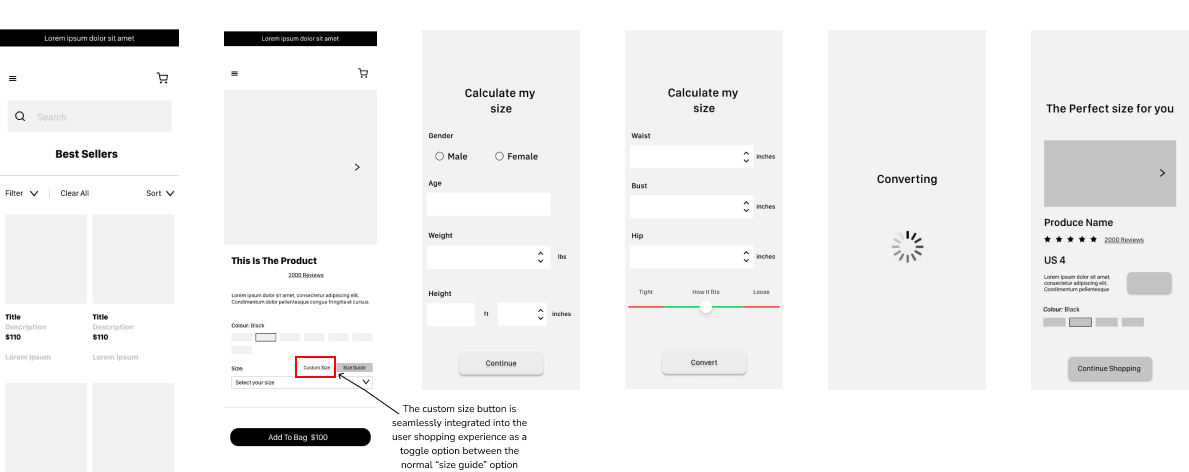
Version 2 prototype
After user testing, re-evaluating and speaking to our mentors from Shopify, we thought it would be best to incorporate an innovative way for users to find their custom size instead of manual entry. We looked into using 3D scanning for users to quickly obtain their accurate measurements, this will be done by leveraging Apple’s LiDAR technology.
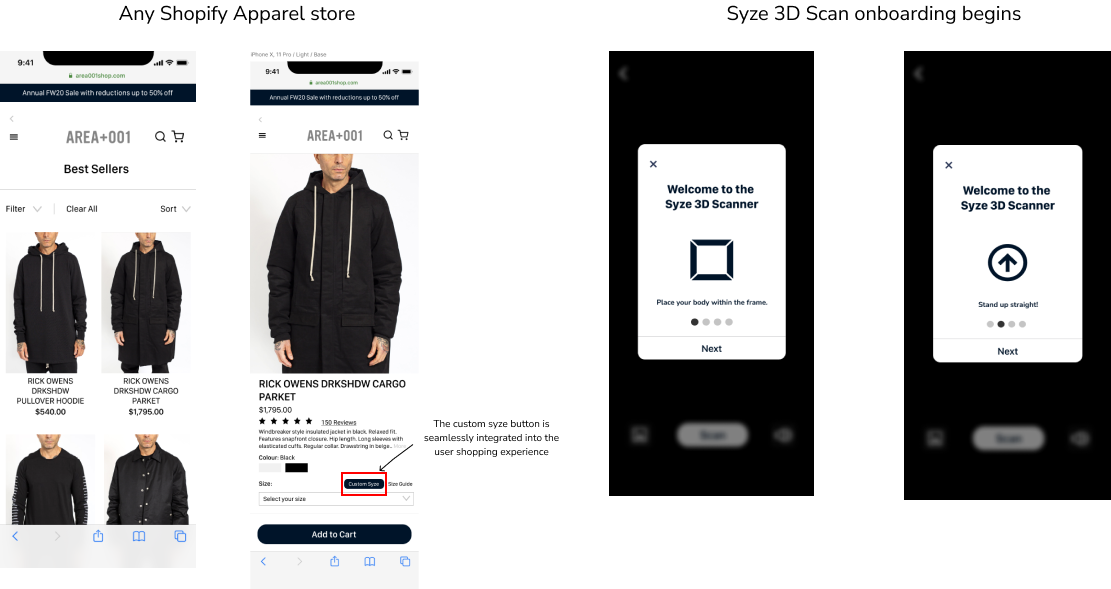
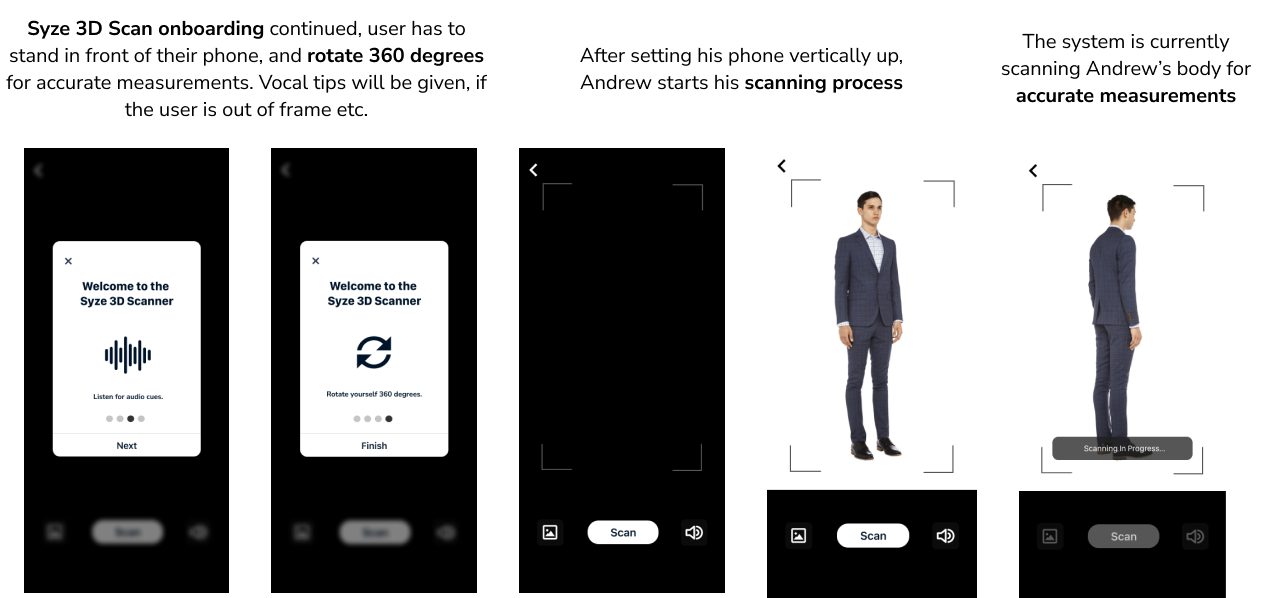
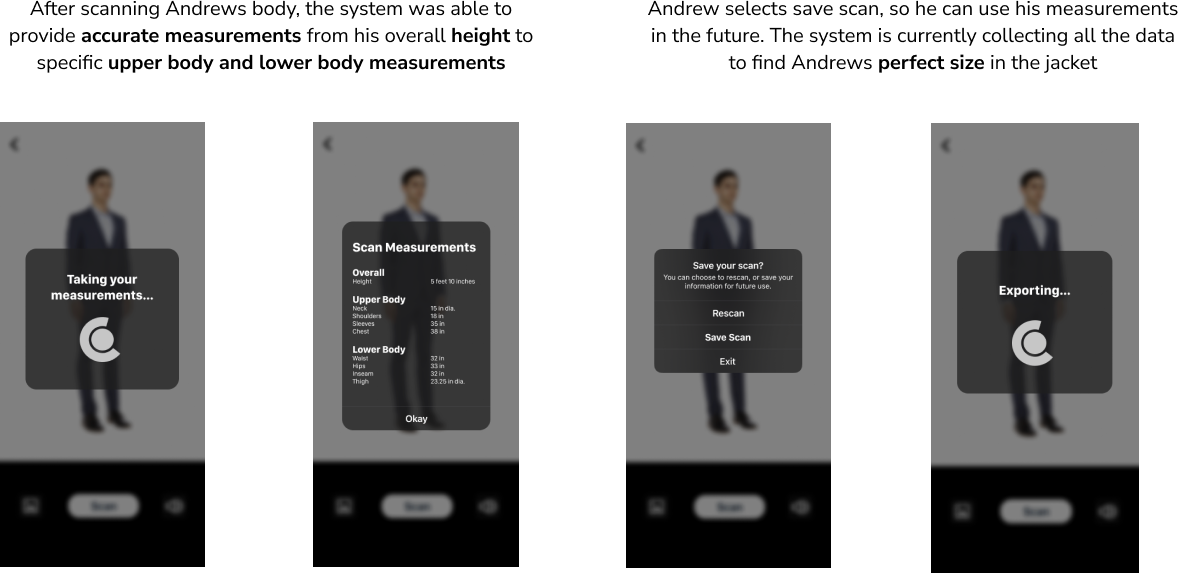
The Solution
Our final solution has 3 main features which help differentiate our plug-in from existing solutions:
1. Plug- In Integation
It was important for us to make this accessible, adaptable and convenient for the average user. Our Syze plug-in is seamlessly integrated into the customer shopping experience by being on the product page.
- Integrated into the customer shopping experience
- Convenient way of checking your custom size
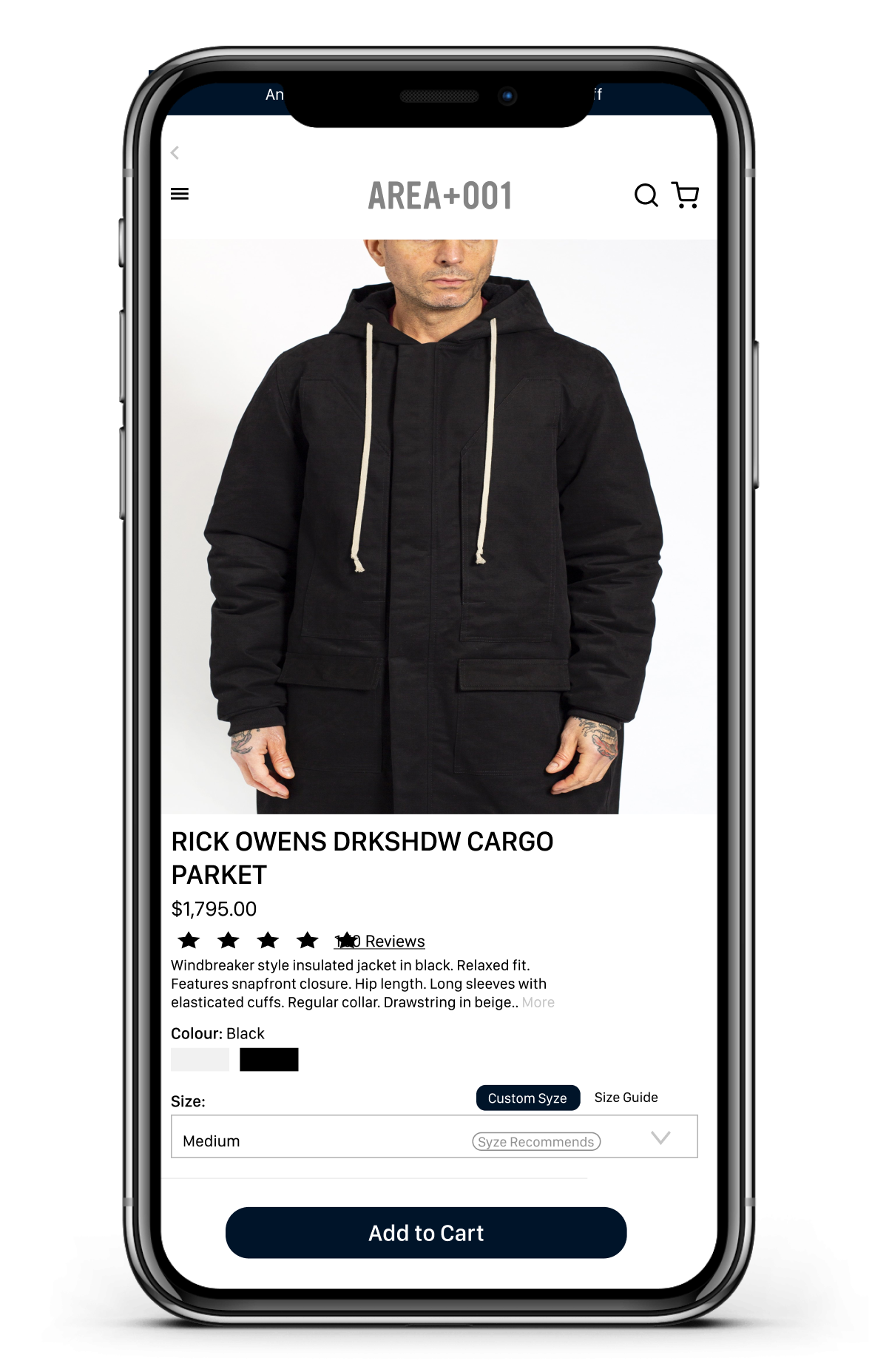

2. 3D Scanning using LiDAR technology
It was important to find an efficient way of measuring custom measurements. By using the 3D Scanning technology, we are able to find accurate measurements within seconds using an iphone.
- Efficient way of measuring your custom size, and you don’t have to go out of your way to get a tape measure
- Accurate sizing done within seconds
3. Size Recommendations
Providing the final size recommendation based on personal measurements and brand measurements will reduce customer uncertainty when purchasing the product, which is the main problem
- Provides accurate sizing based on personal measurement and brand measurements
- Reduces customer uncertainty when purchasing the product
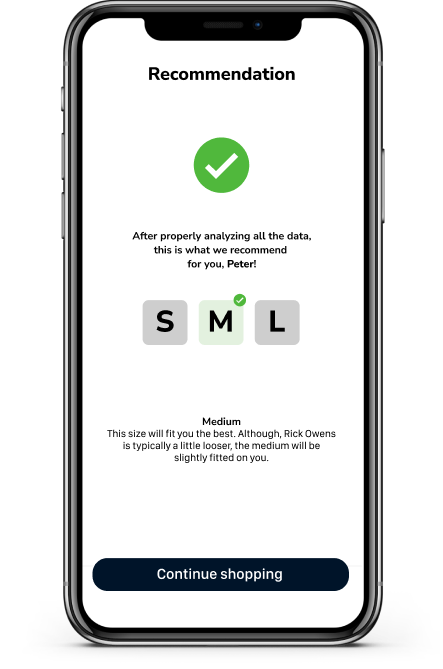
Measuring Success
We will be tracking success for the solution based on each Shopify merchant's analytics according to their:
- Increased sales conversions
- Decreased return rates for fit and sizing issues
- positive customer reviews mentioning the size and fit of the apparel item
Next Steps
I would like to focus on designing more inclusively with emerging technology, its important that our product is accessible to everyone. These are some of the next steps I would take for Syze:
- Make this technology accessible for Android users
- Integrate the syze plug-in into a variety of Shopify apparel merchants
- Continue to test the plug-in feature, obtain user/merchant feedback on its effectiveness, iterate any changes needed
Check out my work
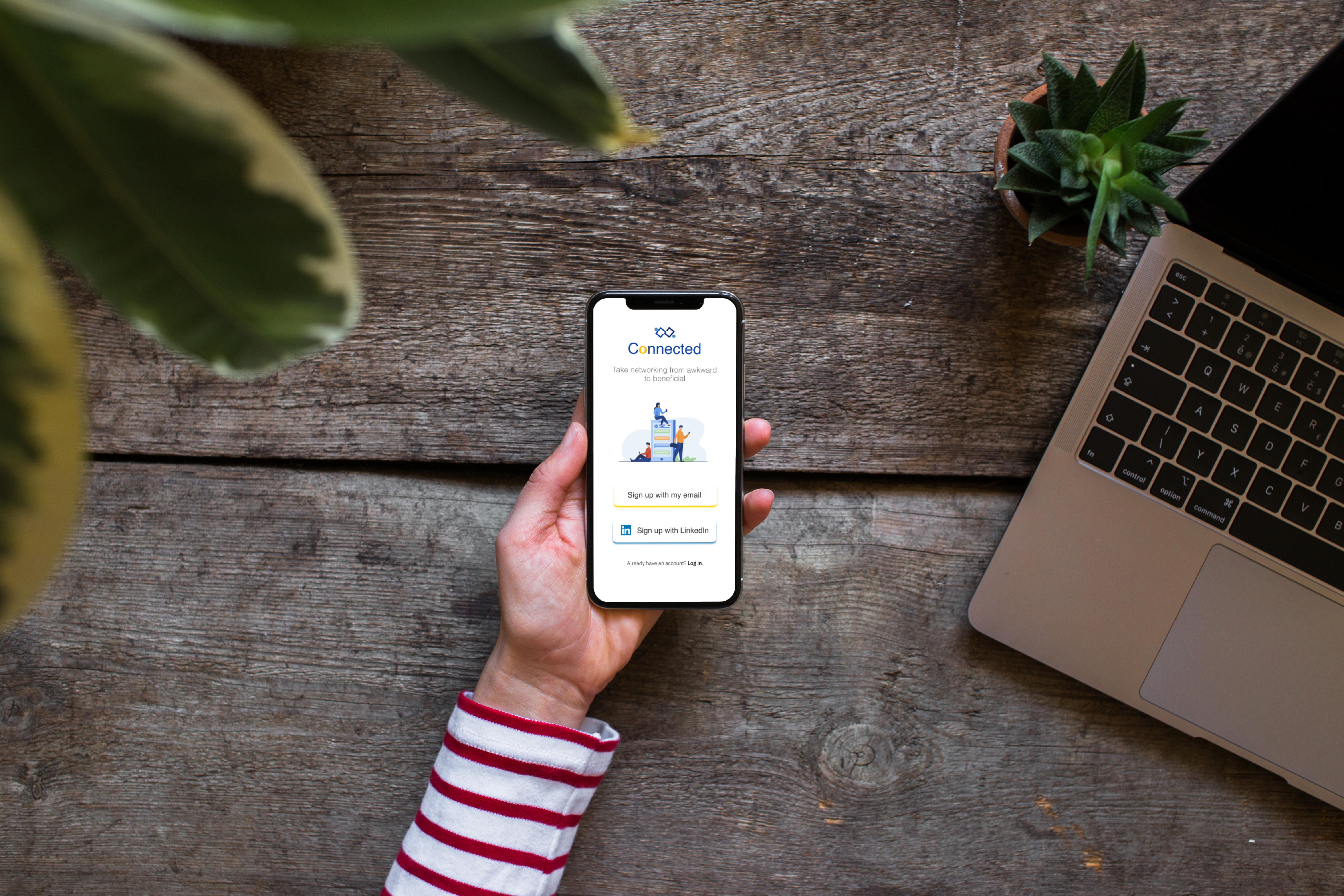
ConnectedUX Design, Branding, Marketing

Air Canada Heuristic Evaluation, Redesign, UI Library
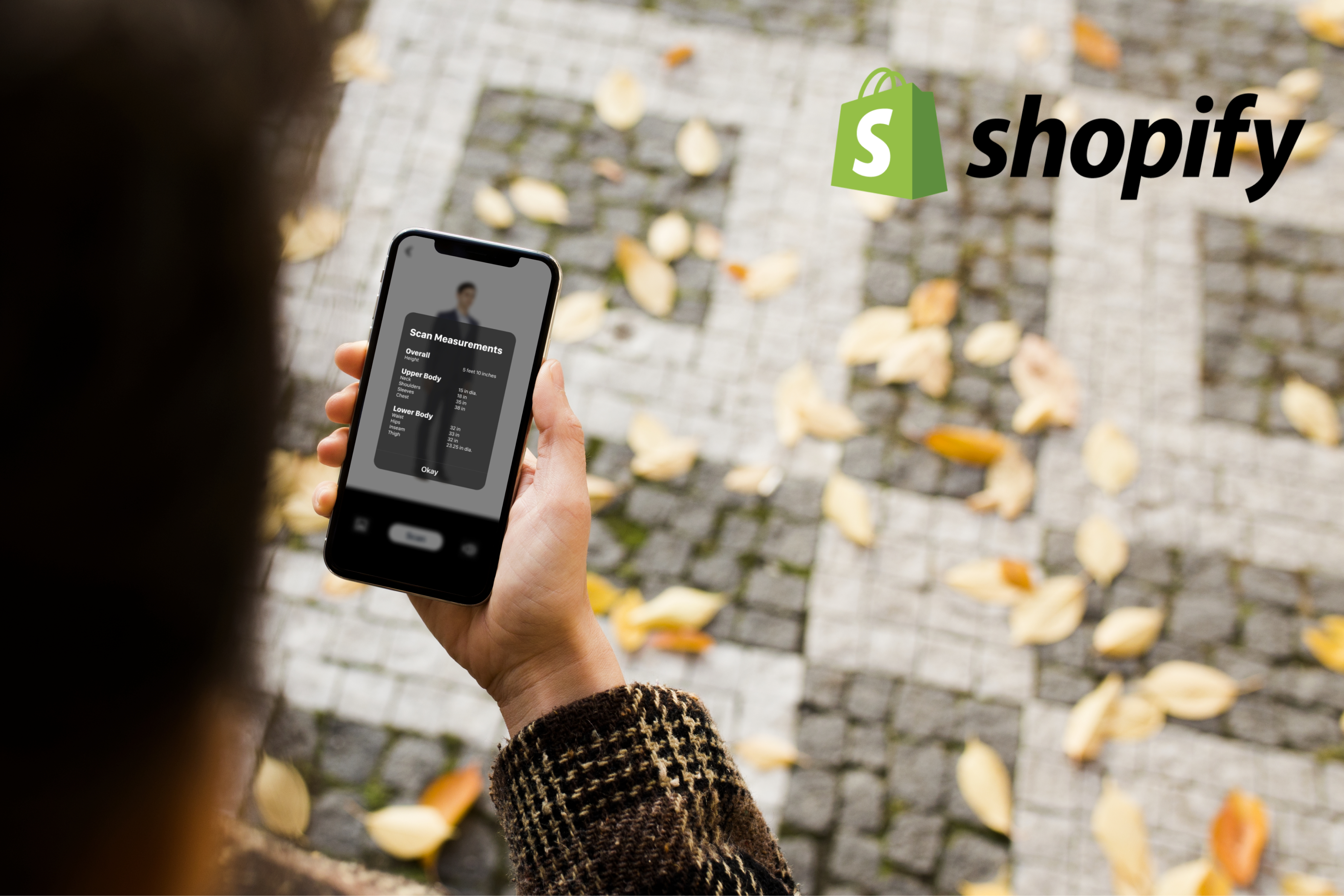
ShopifyUX Design Case Study

ConnectedResponsive Web Design
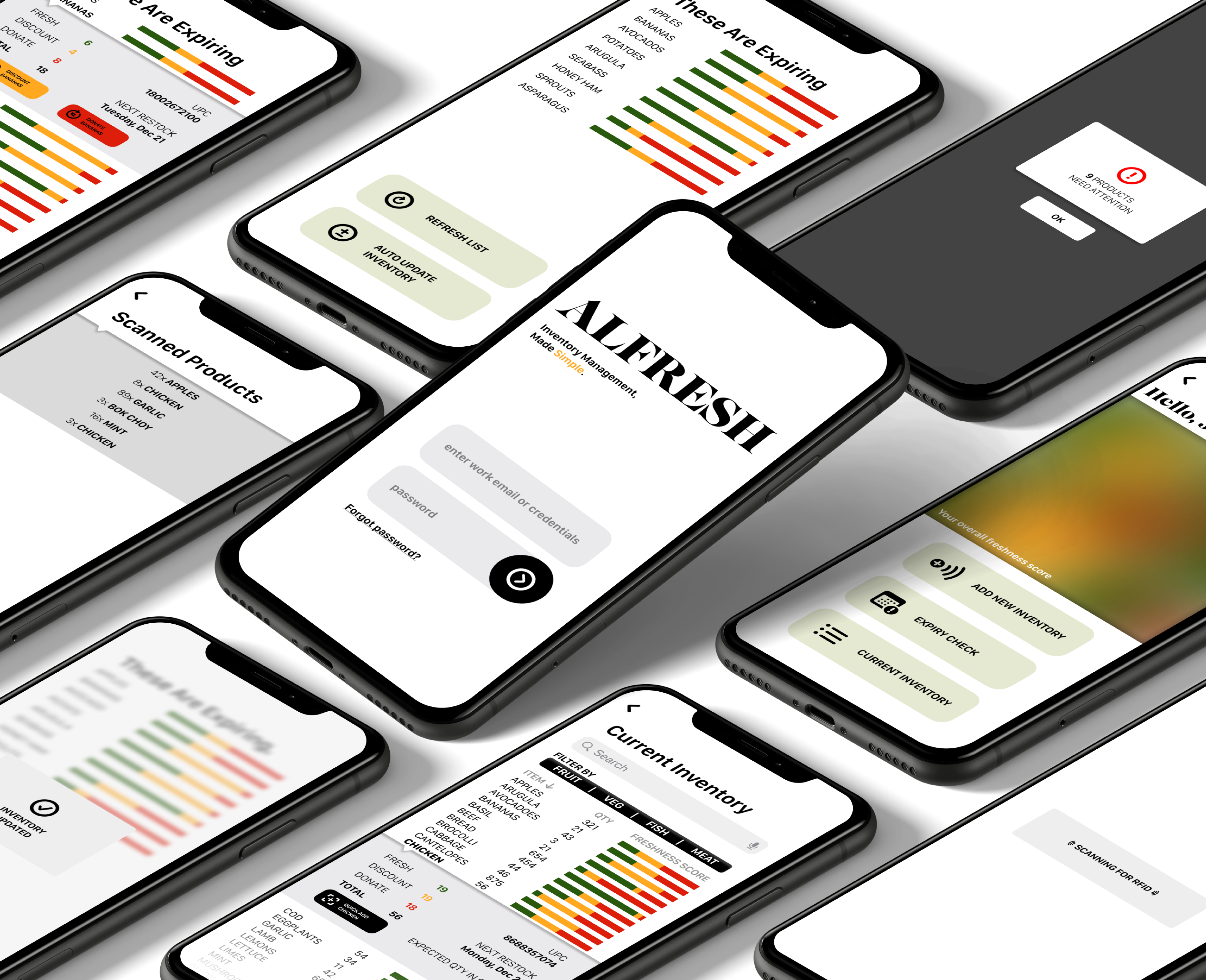
AlfreshUX Design Case Study

